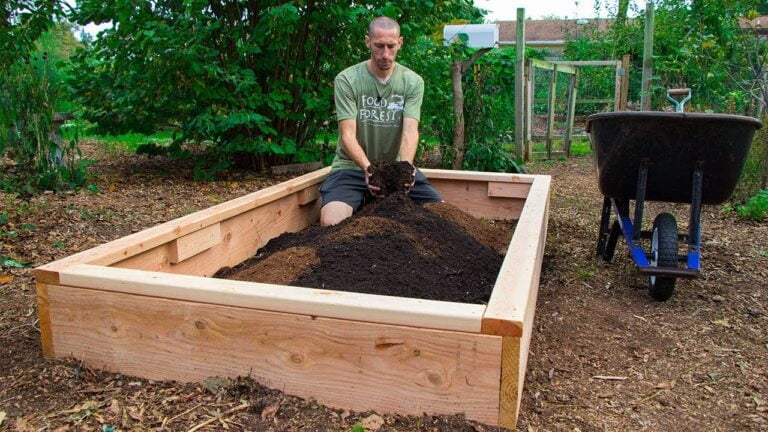Are you looking to take your gardening to the next level? Consider creating homemade raised garden plots. These customizable and space-efficient gardens are perfect for growing a variety of fruits, vegetables, and flowers. In this article, we will explore the benefits of raised garden plots, as well as provide step-by-step instructions for creating your own. Whether you’re a seasoned gardener or a novice, these DIY plots are a great way to elevate your gardening experience.
What is the most cost-effective method for constructing a raised garden bed?
Building a raised garden bed with cinder blocks or concrete blocks is the most cost-effective method. Not only are these materials affordable, but they also provide a durable and long-lasting structure for your garden. With their sturdy and stable design, they are a practical and budget-friendly option for creating a raised garden bed.
In addition to being the cheapest option, using cinder blocks or concrete blocks for a raised garden bed also offers versatility and flexibility. They can be easily stacked and rearranged to create different shapes and sizes, allowing you to customize the design to fit your gardening needs. This makes them a practical and efficient choice for anyone looking to create a raised garden bed on a budget.
How can I create my own raised bed soil?
Yes, you can make your own raised bed soil by composting your green clippings and vegetable scraps, which should ideally make up two-thirds of the soil in your garden bed. If you don’t have enough compost, you can supplement with “Garden Mix” or Top Soil from your local garden center to fill the rest of the bed. This way, you can create a nutrient-rich and sustainable soil for your raised bed garden.
What is put in the bottom of a raised garden bed?
When it comes to the bottom of a raised garden bed, the key is to start with good soil. High-quality, nutrient-rich soil is essential for the health and success of your plants. You can either purchase it in bulk or create your own mix with topsoil, organic materials, and coarse sand. By focusing on the foundation of your garden, you can ensure that your plants have the best chance to thrive.
The bottom of a raised garden bed should be filled with healthy, nutrient-rich soil. This can be achieved by purchasing high-quality soil in bulk or creating your own mix with topsoil, organic materials, and coarse sand. By prioritizing the health of your soil, you are setting your plants up for success and creating a strong foundation for your garden.
Mastering the Art of Homemade Raised Gardens: 5 Expert Tips
Are you ready to elevate your gardening game with homemade raised gardens? Look no further than these expert tips to help you master the art of raised bed gardening. First, choose the right location for your raised garden, ensuring it receives ample sunlight and good drainage. Next, select the best materials for your raised bed, such as cedar or composite wood, to promote longevity. Then, don’t forget to layer your soil properly, incorporating a mix of compost, peat moss, and vermiculite for optimal plant growth. Additionally, consider utilizing a trellis system to maximize space and support climbing plants. Lastly, regular maintenance is key – be sure to water, weed, and fertilize your raised garden as needed to keep it thriving. With these expert tips in mind, you’ll be well on your way to creating a bountiful and beautiful raised garden right in your own backyard.
Transform Your Yard with These 5 Essential Raised Garden Plot Tips
Transform your yard into a vibrant oasis with these 5 essential raised garden plot tips. Elevate your gardening game by creating a raised garden bed that not only adds visual appeal but also maximizes space and improves soil quality. With the right tools and techniques, you can cultivate a thriving garden filled with lush plants and bountiful harvests.
Take your gardening to the next level by following these simple yet effective tips for creating a raised garden plot. From choosing the right location and materials to proper watering and maintenance, these tips will help you achieve a beautiful and productive garden in no time. Whether you’re a seasoned gardener or a novice, implementing these tips will surely make a noticeable difference in the health and vitality of your plants.
Incorporating homemade raised garden plots into your gardening routine can transform your outdoor space into a thriving oasis of fresh produce and vibrant flowers. By utilizing easily accessible materials and implementing simple construction techniques, you can create a sustainable and functional garden that enhances both the aesthetic appeal and productivity of your landscape. Whether you are a seasoned gardener or a beginner looking to cultivate your green thumb, homemade raised garden plots offer a versatile and cost-effective solution for maximizing your gardening potential. Start building your own raised garden plots today and reap the rewards of a bountiful harvest right in your own backyard.

